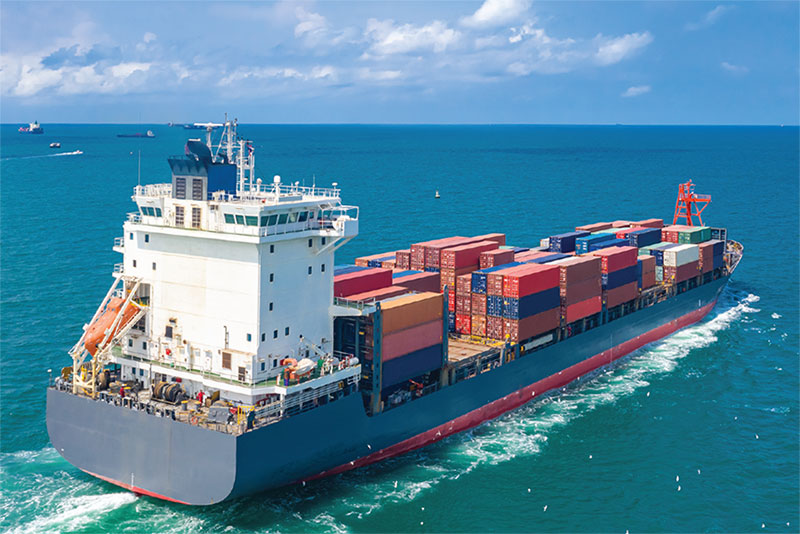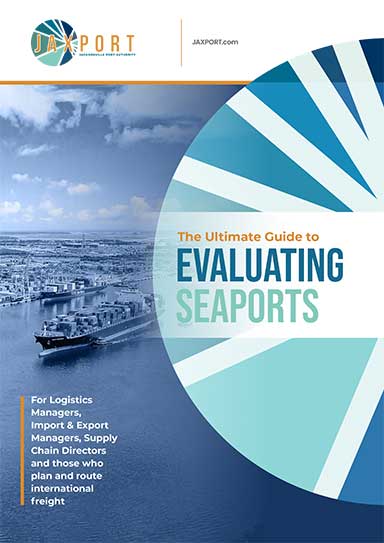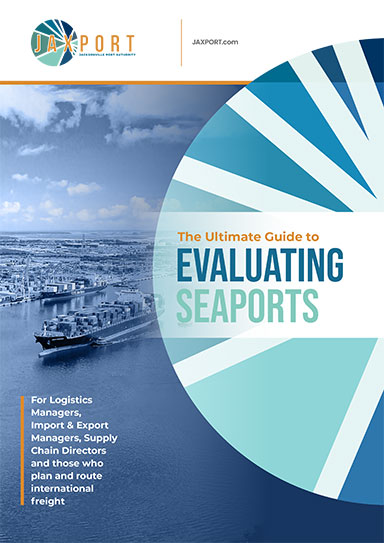Ocean shipping returns to pre-pandemic status
Following a year of record revenue for carriers, shipping analysts see the pendulum swinging in the other direction, as rates are decreasing, volumes are falling, and new capacity is coming online.
Shippers faced stormy seas last year, as unprecedently tight capacity resulted in high rates and handsome profits for ocean carriers.
“CMA CGM made more profits than any French company—ever, including TotalEnergies,” comments Stefan Verberckmoes, an analyst at Alphaliner.
This year, shipping analysts see the pendulum swinging in a different direction. Rates were decreasing, volumes are falling, and new capacity is coming online. Some analysts are even saying, albeit with some reservation, that the market has returned to normalcy.
“The market is changing constantly,” reports Verberckmoes. “After the effects of the pandemic and easing of congestion, carriers expected a hard landing. But a crash has not occurred.”
Spencer Shute, principal consultant at Proxima, observes that while demand has continued to drop, rates have started to balance out at pre-pandemic levels. “We’re still seeing weekly variances plus or minus 1% to 3%,” he says.
Verberckmoes notes that in April, the Shanghai Freight Index increased three weeks in a row as a result of several trades such as China to the United States. “The charter market rates remain strong,” he adds. “Capacity in the market is returning due to lower cargo demand.”
With many shippers concluding their annual tender negotiations for new trans-Pacific contracts that commenced on May 1, Philip Damas, managing director at Drewry Supply Chain Advisors, finds that contracts on the trans-Pacific and Asia-Europe routes this year will clearly give exporters and importers a 55% to 85% cut in shipping costs compared to 2022.
“This is the largest year-on-year reduction in shipping costs in at least seven years, reflecting the reversal of the shipping market from under-supplied to over-supplied,” says Damas.
Market drivers
Numerous drivers are influencing ocean shipping rates this year, such as weaker demand aggravating inventory reductions; the possible return of over-capacity in container shipping as a result of the number of new ships coming online; and ocean carriers’ attempts to control capacity, mainly through “cancelled sailings.”
Christian Roeloffs, cofounder and CEO of Container xChange, sees the ocean shipping industry experiencing a freight recession due to the postponement of inventory replenishment cycles by retailers that overstocked. “As we look ahead, we anticipate a subdued rebound in demand, as retailers begin to deplete their excess stock in the coming months, leading up to the peak season,” he says.
Most companies have cut back on imports or are seeing their exports decline since mid-2022. Consequently, warehouses remain largely full. “However, retailers aim to clear the inventory before the next lot of imports,” Damas says.
With the economy trending downwards and consumers continuing to feel the impact of inflation, however, retailers are being prudently conservative with their orders. This is reflected in import volumes. For example, Damas points out how, in the first two months of 2023, container imports at the ports of Los Angeles/Long Beach fell 30% to 1.14 million TEU from 1.63 million TEU in the same period of 2022.
“Even back in 2019 the January-February import traffic was much higher, at 1.41 million TEU,” says Damas. “Based on discussions with Drewry customers, we know that this very large reduction in volume is partly explained by temporary inventory reductions measures and also partly by the early timing this year of the Chinese New Year holiday, when Chinese factories traditionally shut down and workers go home.”
Consequently, Drewry expects the second and third quarters of 2023 to see a small rebound in trans-Pacific volumes and some stabilization of spot freight rates.
Shute concurs: “Many are expecting some relief from the inventory surplus we encountered last year as we head into peak season, which would help rebound demand as we approach the third quarter.”
By contrast, however, Damas notes how some ocean carriers say freight rates will increase in the second half of the year. “But we’re not buying that, yet,” he adds.
Up through this point of 2023, shippers have had the upper hand in rate negotiations as a result of market conditions. “However, carriers are reacting with minimum container quantities and limits to ensure they’re well-positioned to negotiate as demand starts to increase,” says Shute.
However, as stated earlier, the global economy is still shaping forecasts and consumer confidence, causing companies to evaluate their overall supply chains for cost reductions. “This could shift some normal trade lanes,” says Shute. “While this shouldn’t immediately impact ocean freight, the long-term ramifications of significant change could cause cargo imbalances, which severely affected ocean freight during the pandemic. Therefore, carriers are keen to ensure equipment doesn’t become a backlog.”
Drewry forecasts that nominal vessel capacity will increase by 4.3% in 2023, whereas global container demand will increase by only 0.4% this year. “On top of this, the end of port delays will add back about 15% of ‘effective capacity,’” Damas adds. “This will tilt the market balance to a situation of over-capacity and make container shipping a buyer’s market for the first time in years.”
Of note, a host of new ships are scheduled for delivery this year, although some could be intentionally delayed to control capacity. “We’ve seen blank sailings and cancellations to keep some stabilization in the market,” Shute says.
MSC is the largest player focusing on new deliveries. “MSC is increasing its capacity rapidly,” says Verberckmoes.
Indeed, most new ships are being built to accommodate new fuel types such as LNG to meet new environmental requirements.
“Lines are using profits to start changing their fleets and diverting to more green fuels,” Verberckmoes says. “We see the first Maersk vessel that can sail using methanol.” That 2,100 TEU feeder vessel is scheduled for delivery later this year and is the first of 19 carbon neutral ships Maersk has on order.
With so many ships coming online, observers expect lines to participate in a scraping tsunami. But this has not yet materialized. “There is still demand for ships,” Verberckmoes adds.
Meanwhile, as ocean carriers face growing over-capacity, they look to reduce shipping supply and costs. Damas points out how, in April and May, trans-Pacific carriers cancelled around 30 sailings. “This represents 9% of the 340 sailings that were cancelled for the period of week 14 to week 18, based on Drewry capacity data,” he says. “Cancelled sailings save carriers money, but they cause logistics disruptions, administration costs and rework to exporters and importers.”
Better rates, service
Shippers are hopeful that the third quarter of 2023 will bring a better peak season and freight demand recovery. Although the container price sentiment index, an analysis tool performed by Container xChange, indicated negative shipper sentiment through mid-March, by April shippers expressed more confidence for in third quarter of this year.
Earlier this year, Drewry predicted at Logistics Management’s annual “Rate Outlook” webinar that contract rates would fall by at least 50% year-on-year, and shippers would be able to secure better terms and conditions. “In hindsight, we should have said at least 60%,” says Damas. “Some of our shipper clients have saved between $10 million and $200 million in ocean freight costs.”
Drewry finds that the intense competition among carriers and non-vessel operating common carriers (NVOCCs) in this year’s bid season has resulted in even larger reductions than 50%, and shippers have secured better terms and conditions, based on discussions and bids. “Shippers in this latest bid season have set aggressive target rates—some as low as $1,200 per 40-foot container from Asia to the U.S. West Coast,” says Damas. “It doesn’t appear that carriers have agreed to such low rates.”
Damas also observes that in addition to securing much lower rates, shippers are receiving improved service. “Transit times are twice as fast than a year ago, and port congestion at major ports has reduced by 50% in North America and 60% in Europe,” he says.

Key takeaways
In short, shippers need to be aware that the ocean shipping market is still volatile and changing. “Keeping close communications with your carrier base and internal teams is key in adjusting to the market,” says Shute.
Harry Duong, of Pudong Prime International Logistics Inc., an international freight forwarding company, notes how NVOCCs and freight forwarders are diligently crafting their strategies to adapt to the current market conditions influencing consumer demand and freight demand.
“The anticipated changes in the industry, particularly after contract renewals towards the end of the first half of 2023, signal a crucial time for preparation,” says Duong. He notes how the industry is hopeful that pent-up freight demand will be propelled by the beginning of the retail inventory replenishment cycles in the quarter after a slump in demand and overstocking by retailers.
For that reason, Damas emphasizes the importance of securing freight cost reductions that are available in the market. “Use benchmarking groups to monitor their progress,” he says. “Given that there will likely be more than 100 cancelled sailings in 2023, companies should make backup plans for these disruptions and consider multiple options.”
Damas particularly feels that ocean carriers will be very hungry for business and more open to concessions in the next two years. “This means that exporters and importers should revisit their contract terms with ocean carriers and intermediaries, mainly to incorporate more favorable conditions and terms such as payment terms and service commitments,” he adds.
The key takeaway: While ocean shipping costs will be down this year, shippers will find that service quality and reliability will be the bigger challenge.














